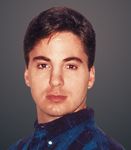- Acne
- Actinic Keratosis
- Aesthetics
- Alopecia
- Atopic Dermatitis
- Buy-and-Bill
- COVID-19
- Case-Based Roundtable
- Chronic Hand Eczema
- Chronic Spontaneous Urticaria
- Drug Watch
- Eczema
- General Dermatology
- Hidradenitis Suppurativa
- Melasma
- NP and PA
- Pediatric Dermatology
- Pigmentary Disorders
- Practice Management
- Precision Medicine and Biologics
- Prurigo Nodularis
- Psoriasis
- Psoriatic Arthritis
- Rare Disease
- Rosacea
- Skin Cancer
- Vitiligo
- Wound Care
Article
Rosacea Research Foundation: Sufferers form group to improve treatments for all
Most people experience speed bumps in life. Sometimes a few collisions on blind curves are thrown into the mix. I seemed to be the exception. I never experienced speed bumps or nasty curves; I cruised along as extroverted and athletic, and considered myself reasonably handsome and intelligent. This came to a halt in my mid 20s. Suddenly, the genetic switch for rosacea was flipped.

Severe symptoms Rosacea affects the facial skin and eyes of more than 45 million people worldwide. Besides redness, flushing, swelling, burning sensations, papules, pustules, visual disturbances and loss of vision, symptoms can include chronic facial pain, skin disfigurement and visual changes. In my case, rosacea was devastating. I could not adapt to it, nor could I fight through it, because rosacea triggers often come with repercussions.
I had severe symptoms related to all five rosacea subtypes: erythematotelangiectatic, papulopustular, phymatous, ocular and neuropathic. I had hundreds of daily triggers for facial flushing, burning sensations, papules, blurred vision and nose swelling.
Searching for answers As a medical researcher, I decided to search for better treatments. I was astonished to see such a large gap in the knowledge and treatment of rosacea in the medical literature. General dermatologists had no idea how common my symptoms were, while rosacea experts routinely dealt with cases like mine. I finally took the literature to my physicians and received the proper treatment.
At that time, I stumbled across a rosacea support group started by David Pascoe of Australia. David was looking for support and some basic answers, but received much more. His group grew exponentially over a few years to 4,300 members. I was surprised to see thousands of rosacea sufferers detailing the same severe symptoms, lack of treatment options and feeling of medical abandonment.
Antibiotic therapy is effective at treating mild cases and decreasing papule and pustule formation in moderate cases. However, antibiotics are only minimally effective on facial erythema and rarely affect telangiectasia, flushing, phymatous growth or neural burning. While on this treatment, most patients have to continue to avoid all rosacea triggers. In many cases, this may necessitate major lifestyle changes that result in strained friendships and marriages, decreased job productivity, and generalized feelings of hopelessness and depression.
The support group became a community. Friendships were forged, cutting-edge information was gathered and organized. We had many professionals, physicians, researchers and proactive members who helped sort through the Internet hodgepodge and decipher the medical literature. I contributed in this area with my doctorate in medical physiology and my post-doctorate degree in neurovascular physiology - the true heart of rosacea.
Rosacea Research Foundation After witnessing seven years of stagnation in the area of rosacea research and treatments, six professional rosacea sufferers decided it was time to start the Rosacea Research Foundation with a professional board of directors, a medical advisory committee and various support committees.
By this time, I was considered by the medical community to be a rosacea research specialist and treatment analyst, so I was nominated chair of the medical advisory committee. I enlisted a dermatologist, Dr. Patrick Bitter, Sr., who specialized in rosacea treatment; Dr. Peter Drummond, a medical expert in skin flushing and blushing; Dr. Travis Hein, an associate professor who was a vascular expert; Dr. Jerry Darm, a laser specialist who had treated thousands of rosacea patients; and Dr. Chuck Young, a doctor who was able to decipher the medical literature.
Mission statement The Rosacea Research Foundation was set up by a professional core of rosacea sufferers. Everyone volunteers their time, is very passionate about our goals, and is highly motivated. We have taken a very novel approach to funding the best research. We actively search the literature for university researchers, pharmaceutical companies and biotech companies working in areas they do not realize are directly applicable to rosacea. We actively recruit the best and brightest. This fast-tracks human clinical trials on rosacea and opens the eyes of researchers to all aspects of rosacea.
Newsletter
Like what you’re reading? Subscribe to Dermatology Times for weekly updates on therapies, innovations, and real-world practice tips.











